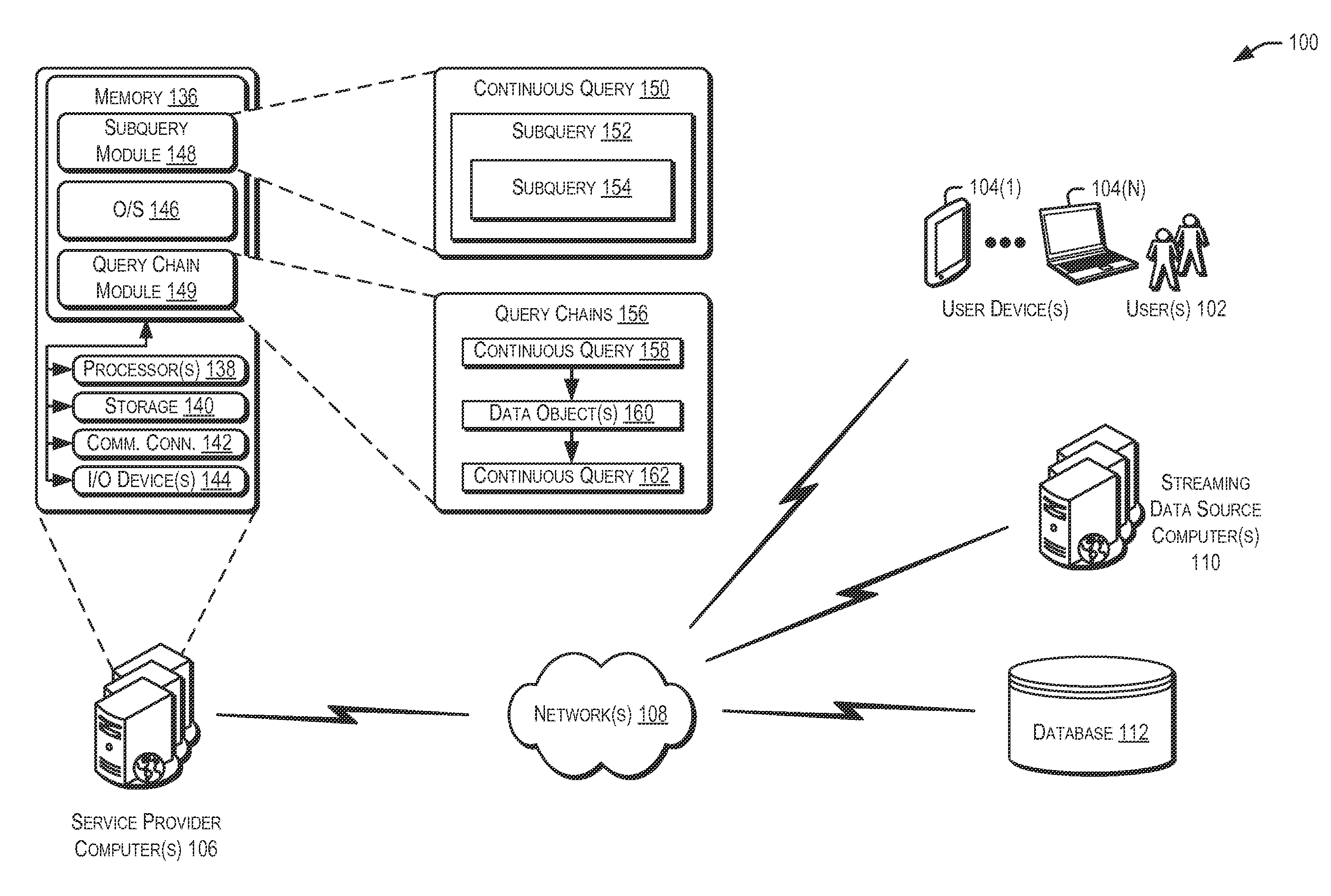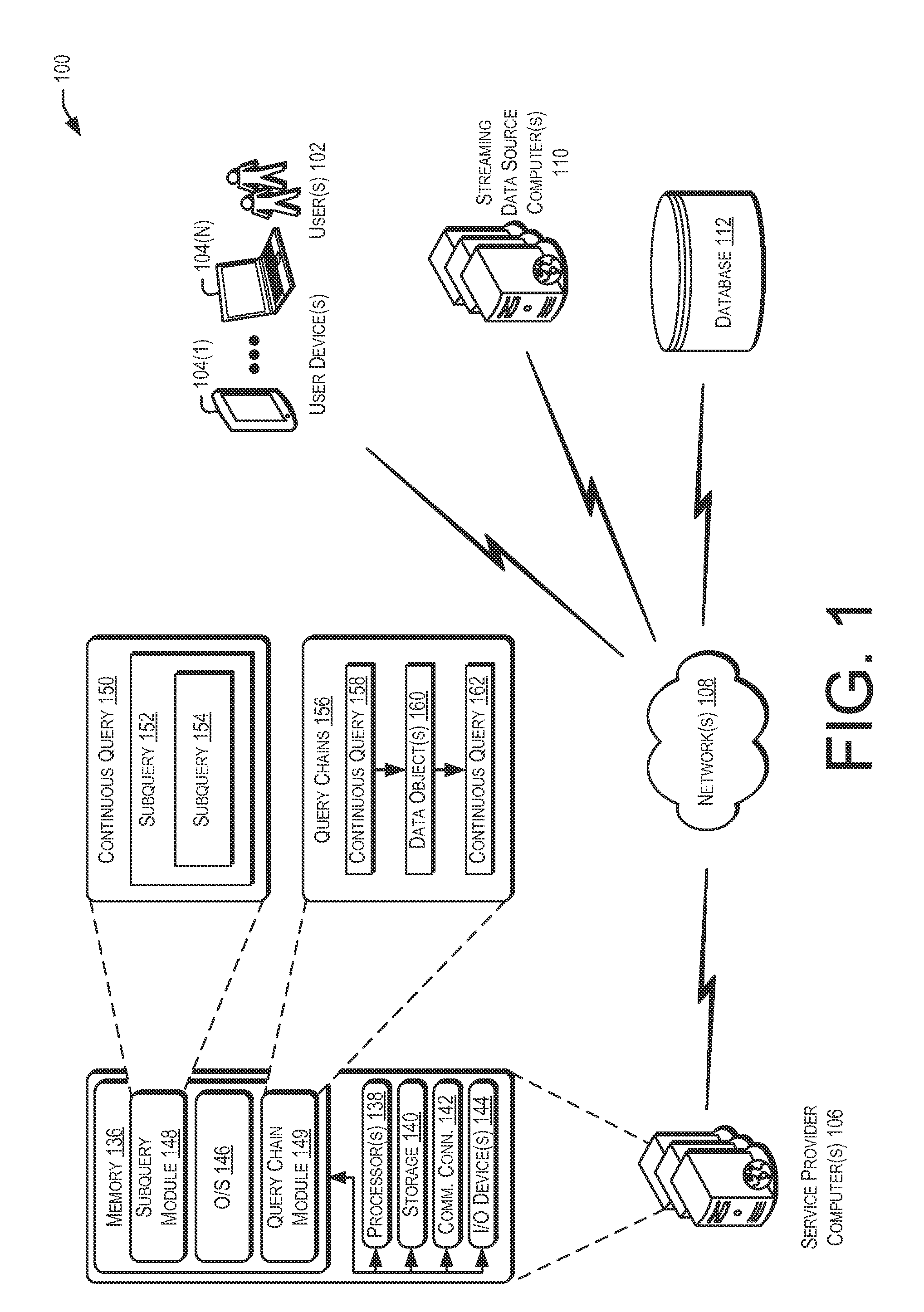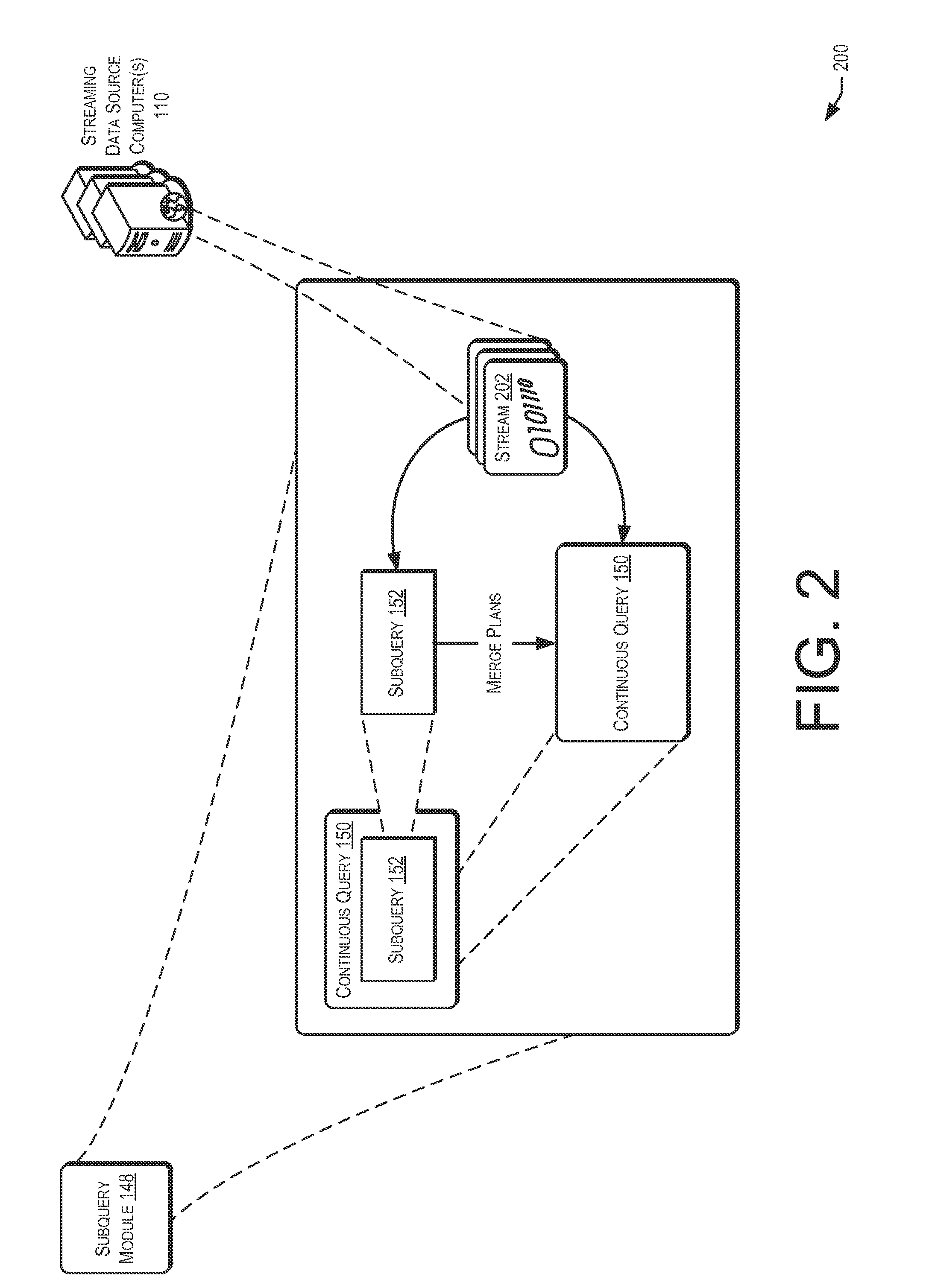Managing continuous queries in the presence of subqueries
a technology of subqueries and continuous queries, applied in the field of database systems, can solve the problems of product offerings still lacking the processing flexibility required for handling today's event processing needs
- Summary
- Abstract
- Description
- Claims
- Application Information
AI Technical Summary
Benefits of technology
Problems solved by technology
Method used
Image
Examples
example 1
[0074]This example shows a select-from-where (SFW) query embedded inside another SFW query:
CREATE QUERY q0 ASSELECT prodid, sum(sales)FROM (SELECT prodid AS prodid, sales AS sales FROMsales_stream [RANGE 24 HOURS]) AS fooGROUP BY prodid;
example 2
[0075]This example shows a subquery with a set of operations. With subquery feature, queries that define views can be specified inline as operands to the set operations as follows (as opposed to as 1>UNION ALL2>):
(SELECT c1, c2, c3 FROM S0 [RANGE 5 HOURS])UNION ALL(SELECT c1, c2, c3 FROM S1[RANGE 5 HOURS])
example 3
[0076]This query shows how an SFW query, set operation query, and subquery can be combined in a powerful way to compose a query:
CREATE QUERY q0 ASSELECT *FROM( (SELECT c1, c2, c3 FROM S0 [RANGE 5 HOURS]) UNION ALL (SELECT c1, c2, c3 FROM S1[RANGE 5 HOURS])) AS fooGROUP BY c1ORDER BY c1
[0077]In some examples, each item in a SELECT clause (or project list) of a subquery containing expressions may be explicitly aliased. This is similar to having view definitions where a project list has expressions. Expressions as such may not have names, so it may be useful to name or alias them explicitly using AS. Additionally, it may not be necessary to alias a project list in SELECT*FROM or SELECT.* FROMAS sourcealias or SELECT c1, c2, c3 FROM where ci refers to an attribute of the source (which can be a base stream, relation, or another subquery). This may either be derived implicitly (in case of * notation) or may be trivially obvious when each expression refers only to base attributes. For a...
PUM
| Property | Measurement | Unit |
|---|---|---|
| time | aaaaa | aaaaa |
| real-time | aaaaa | aaaaa |
| dimension | aaaaa | aaaaa |
Abstract
Description
Claims
Application Information
 Login to View More
Login to View More - R&D
- Intellectual Property
- Life Sciences
- Materials
- Tech Scout
- Unparalleled Data Quality
- Higher Quality Content
- 60% Fewer Hallucinations
Browse by: Latest US Patents, China's latest patents, Technical Efficacy Thesaurus, Application Domain, Technology Topic, Popular Technical Reports.
© 2025 PatSnap. All rights reserved.Legal|Privacy policy|Modern Slavery Act Transparency Statement|Sitemap|About US| Contact US: help@patsnap.com



